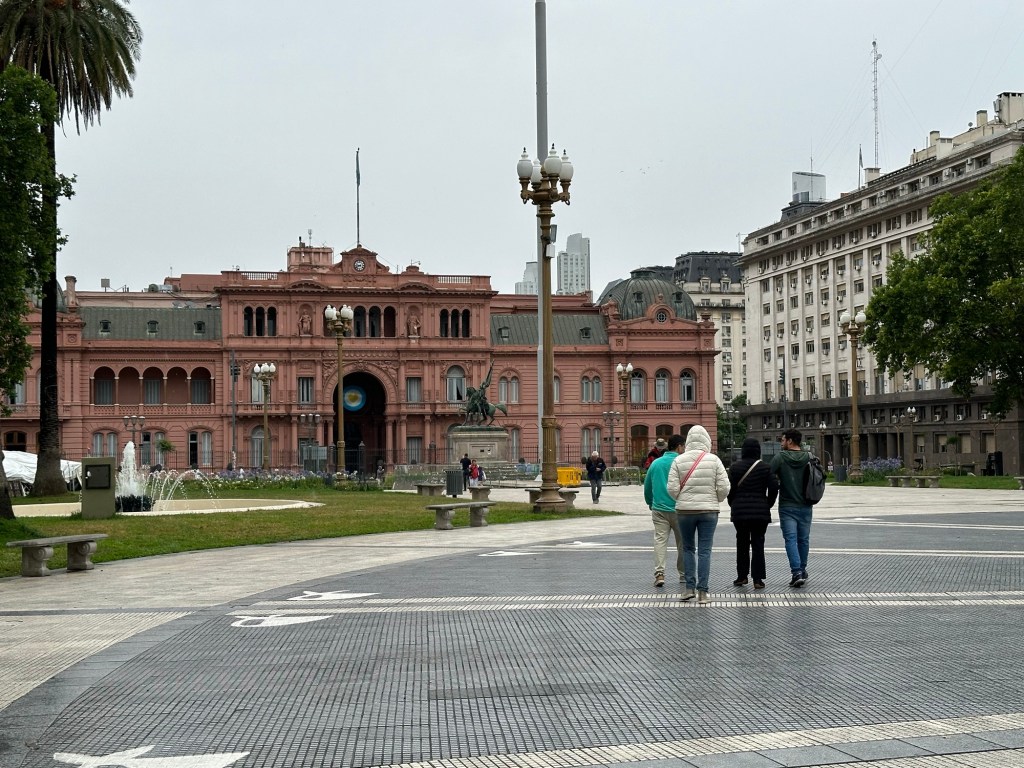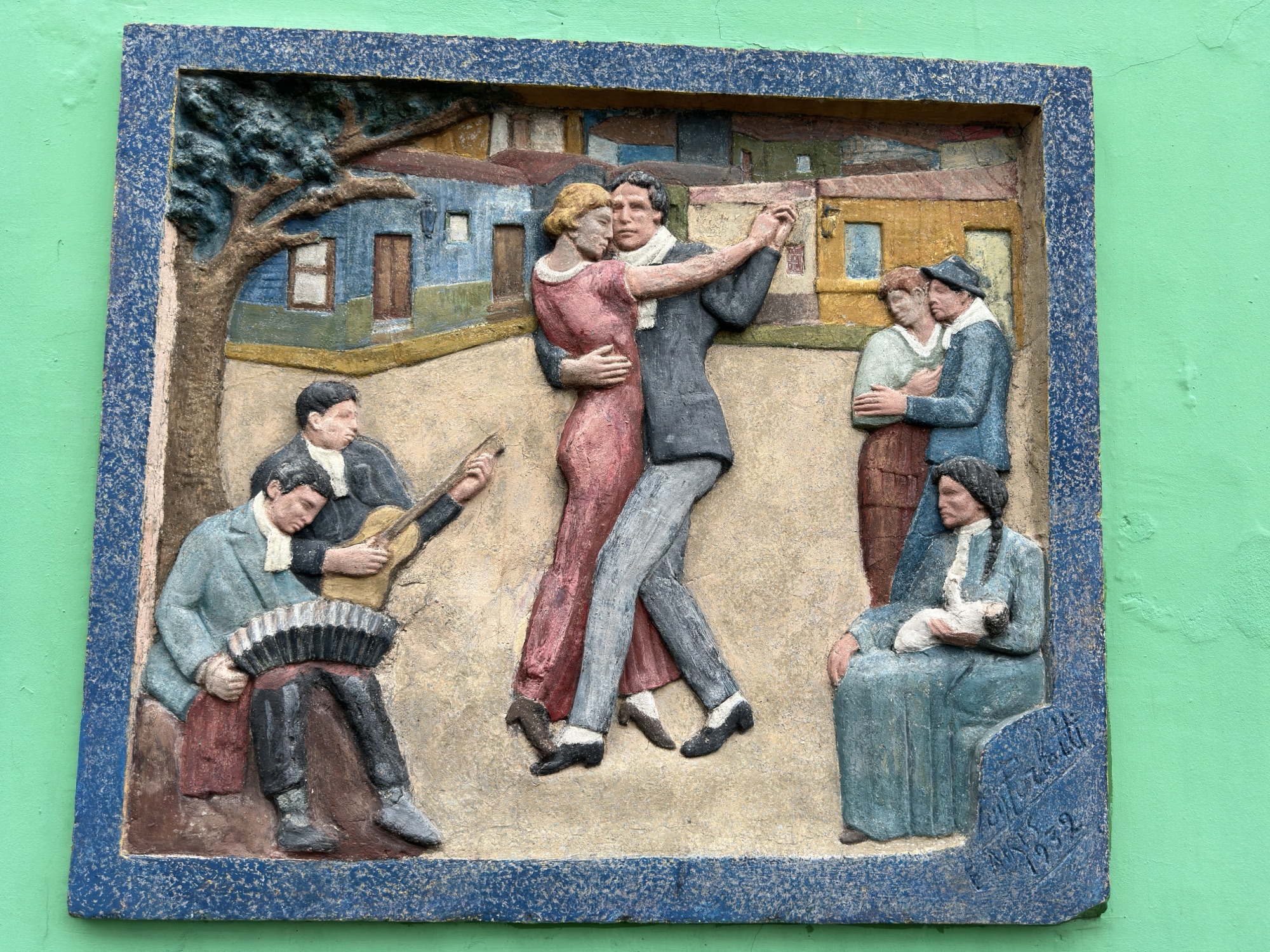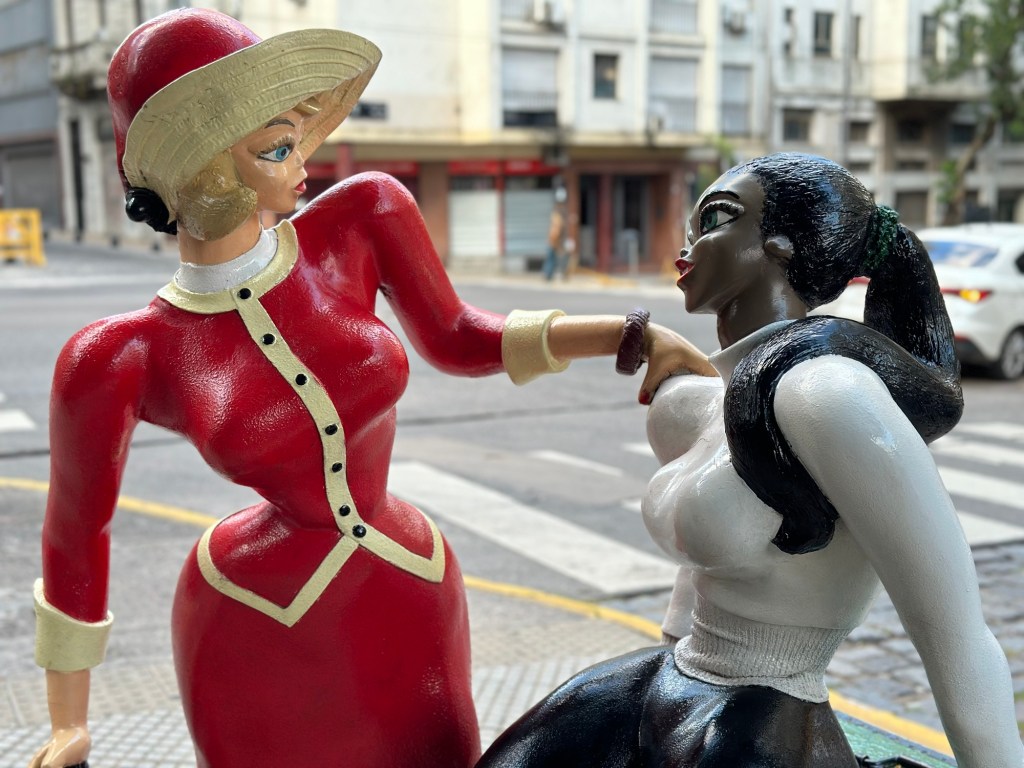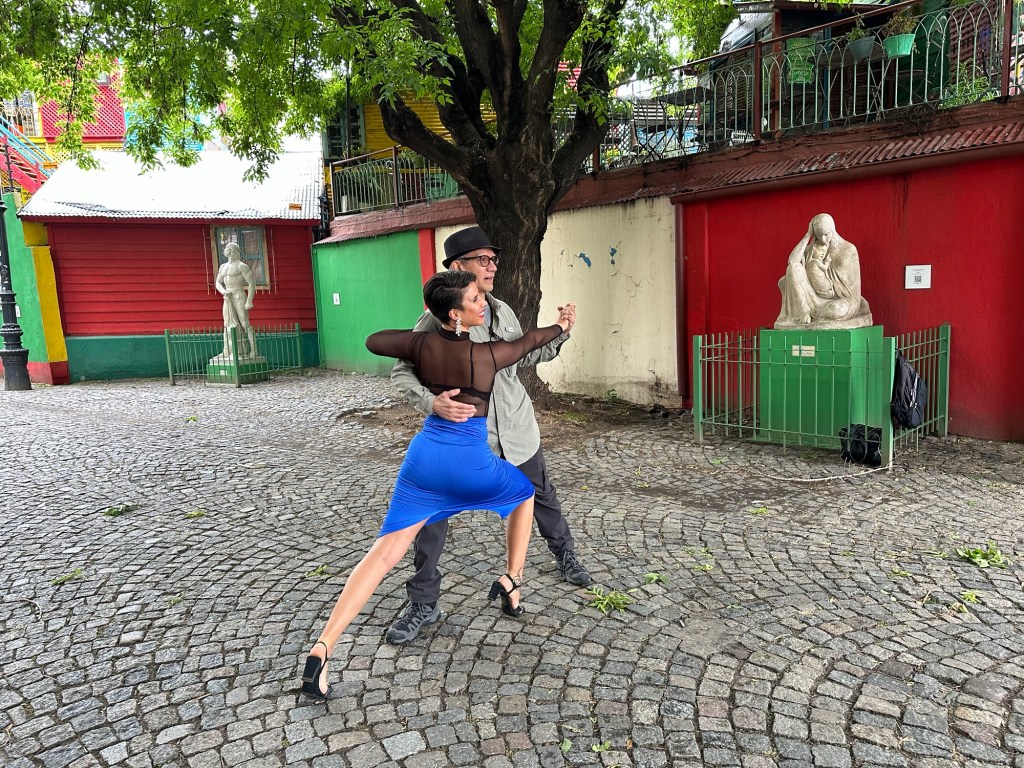A full day in Buenos Airies! We had a bit of a flooding problem in our hotel bathroom but the Magnolia’s wonderful staff sent a repairmen to fix and we were set. We had desayuno at the hotel and then were set for a half day van tour of city. Diego met us and then off we went. First the City Center (Centro) and first to the iconic Plaza de Mayo where it dates back to the colonial revolution in 1810 but nowadays a point of protests- the Perons, Falkland War and more recent political upheavals.
Its a complicated history here , It began with indigenous cultures, followed by Spanish colonization in the 16th century. The country gained independence from Spain in 1816. Throughout the 19th and early 20th centuries, Argentina experienced economic prosperity, immigration, and political turbulence. Most recently a lot of economic turbulence including super high inflation and the devaluation of the Argentine peso with a high black market for US dollars. They also have an unprecedented poverty rate which we really didnt see on our tourbut a few locals we talked to said it was very expensive to live here. And by the way, a Buenos Aires resident is called a


So…nearby we saw the presidential palace, visited the Catedral Metroplitana (1827) where the national revolutionary hero Jose de San Martin is buried and is also the home church of Pope Francis!



Like many far flung places, I”ve never been to, much less even thought I’d visit had streets and landmarks I vaguely remembered seeing in National Geographic when I was a child.
One of the barrios we visited San Telmo was an old colonial neighborhood whose once large homes in the late 1800s became the new home for immigrants -some called sausage houses. Its now a mixed neighborhood and much is gentrified with lofts and renovated market places.



Hoping back on the van we then made our way to the La Boca neighborhood whose origins are French and Italian immigrants. ALso is close to the Boca Junior Soccer stadium. It is often cited as the city’s most colorful neighborhoods punctuated by ubiquitous graffit, multicolored corrugated buildings and the ever present tango culture.





The interior performance hall of Teatro Colon one of the most ornate theaters in the Americas. 7 levels holding 2500 patrons and built with Italian marble and busts of European classical musicians. The tour was amazing!
The last stop was a fascinating look at one of South America’s most storied cemeteries , Cementerio de Recoleta that dates back to 1822. The crypts and mausoleums are more costly than many homes and is next to the Iglesia de Nuestra Senora de Pilar a baroque church from 1732. Some of the tombs bear statues memorializing the defeat of indigenous people, art from the spanish colonial period, wars of independence, and the rise of cattle barons whose beef industry is now one of the country’s biggest exports.



The tour ended and we rested up a bit and with the help of our concierge made arrangements for a “tango” show and dinner. We chose the early bird show as we were tired and tomorrow was leg 2 of our adventure down to Tierra Del Fuego. We never made it to see the main port or Rio de la Plata. Oh well, we did sooo much in such a short time.





Leave a comment